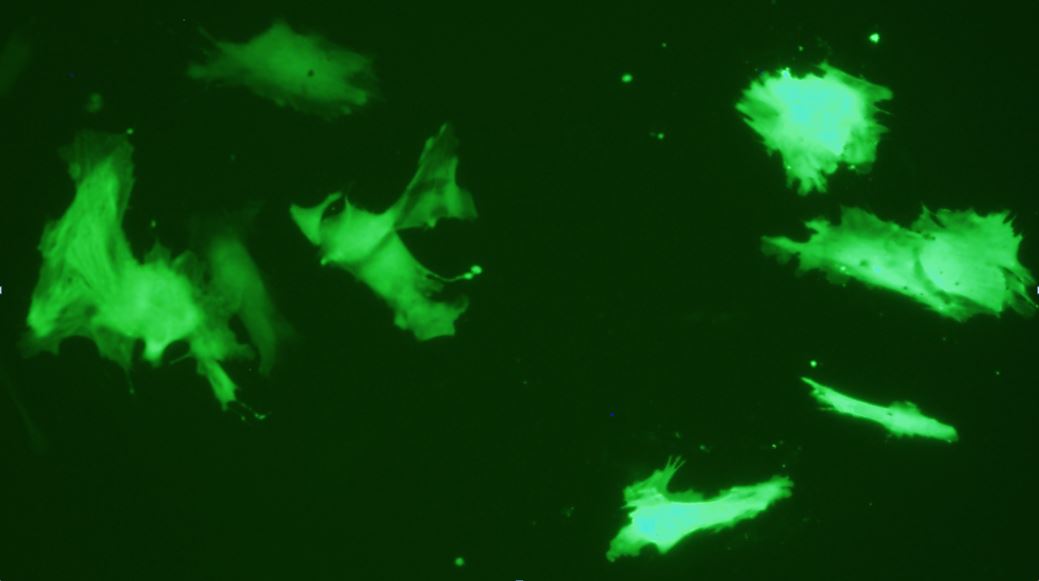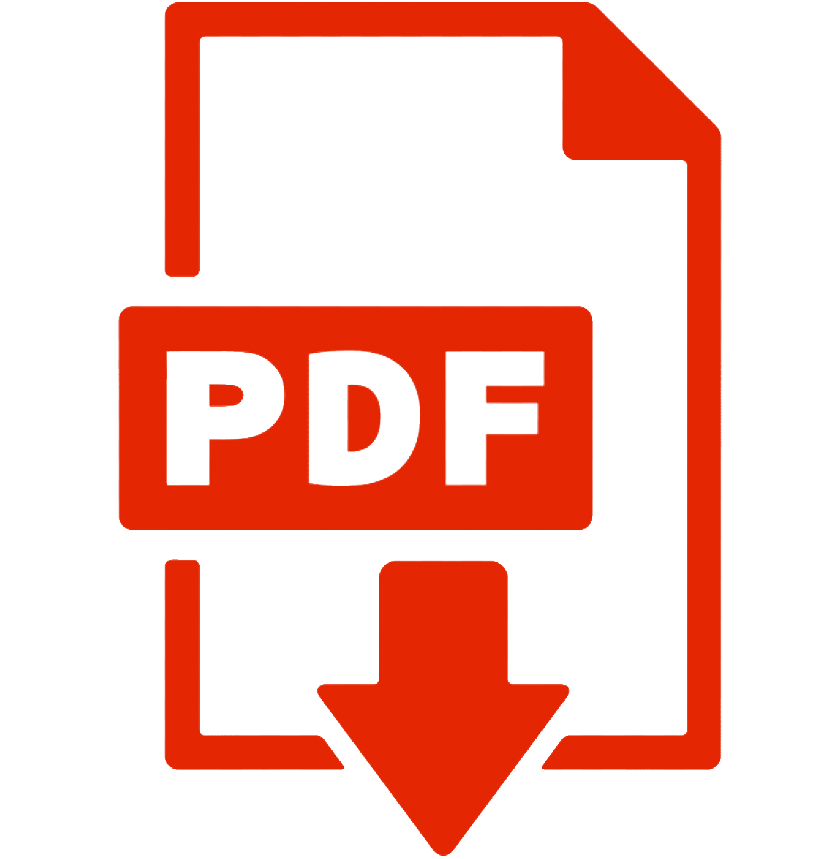Description
Cell to transfect:
Cell Name:® Mouse Embryonic Fibroblast
Cell Synonyms: : MEF, SCRC-1008
Primary mouse embryonic fibroblasts (MEF) have a number of properties that make them an attractive cell culture model. Relative to other primary explant cultures they are easy to establish and maintain, proliferate rapidly and, as a result, large numbers of cells can be produced from a single embryo within several days following explantation. This allows, for instance, for ready comparison of wild-type and knockout cells derived from the same litter of animals. MEF can be expanded through several passages before they reach crisis and can be used to establish cell lines following spontaneous transformation or following derivation from strains carrying mutations, such as in the gene encoding the tumor suppressor Trp53. They have been widely used as feeders to support other cultured cell types, notably embryonic stem cells, as well as for the study of a diverse range of cellular phenomena using microscopic, biochemical and molecular biological techniques.
The Transfection Reagent Features:
- Broad spectrum for the transfection of large plasmid, mRNA, siRNA, and/or other type of nucleic acids, which is best for co-transfection of different type and/or size of nucleic acids.
- Specifically optimized to deliver nucleic acids into MEF
- Highest efficiency to ensure experimental success
- Extremely gentle to cells
- Much less reagent needed for each transfection: 0.5 ml is able to transfect about 1000 wells of 24-well plate
- Deliver single or multiple plasmids
- synthesized from 100% animal origin-free components, making it easy to validate the absence of zoonotic diseases, such as BSE or viruses, in research experiments or cells lines
- Compatible with serum
- Reproducible: due to highly controlled chemical synthesis of each of the ingredients, the reagent forms uniformly sized complex particles with nucleic acids. With optimized protocol, our reagent will ensure the reproducible highest transfection results.
- Developed and manufactured by EZ Biosystems
Data

FIG. 1. High throughput test of transfection efficiency (determined as RLU/mg) on MEF after transfection of luciferase reporter gene by using our 172 proprietary transfection formulas and several most popular commercial transfection reagents. The yellow box showed the results of 4 commercial transfection reagents. The red lines marked our candidate formulas with the highest transfection efficiency for MEF. This test result was confirmed with repeat experiments. The one that showed the optimal balance of potent & low cytotoxicity among those candidate formulas after flow cytometry analysis on the percentage of 7AAD positive cells was later named as MEF Avalanche® Transfection Reagent.
 FIG. 2. MEF cells were transfected with GFP vector (pEGFP-N3) by using MEF Avalanche® Transfection Reagent. The cells were visualized by Nikon Eclipse Fluorescence microscope 24 hours post transfection.
FIG. 2. MEF cells were transfected with GFP vector (pEGFP-N3) by using MEF Avalanche® Transfection Reagent. The cells were visualized by Nikon Eclipse Fluorescence microscope 24 hours post transfection.
For Other Cells
MEF Avalanche® Transfection Reagent (Mouse Embryonic Fibroblast) can also be used on the following cells with high transfection efficiencies.
786-O Cell
Caki-1 Cell
MDCK Cell
BJ Cell
Detroit 551 Cell
MG-63 Cell
WI-38 Cell
Recommended protocols for these cells will be provided with the reagent. The protocols usually provide satisfactory transfection efficiency with invisible cytotoxicity. However, optimization may be needed for certain type of cells. Optimizations may include: the amount of DNA and this transfection reagent; cell density; transfection reagent/DNA ratio, or incubation time for the mixture of transfection reagent/DNA etc. For best transfection result, we recommend using the respective cell type/cell line specific Avalanche transfection reagents. Those reagents have been optimized on both recipes and protocols, and have been proved to have the best transfection results for the respective cell lines or primary cells. You can easily find the respective Avalanche transfection reagents specific for your cells by using the filters of our product list.
Additional Information
| Weight |
0.5 lbs |
| Adherence Phenotype |
Adherent
|
| Cell Type |
Fibroblast
|
| Disease |
Healthy
|
| Names starting from |
M
|
| Product Sizes |
0.5 ml, 1.5 ml
|
| Species |
Mouse
|
| Subcategories |
Cell Type/Cell Line Specific
|
| Tissue Sources |
Embryo
|
Documents
Protocols
 EZT-MEFS-1 Protocol.
EZT-MEFS-1 Protocol.
MSDS

EZT-MEFS-1 MSDS
Citations or Feedback
- Lebeau, J., Saunders, J. M., Moraes, V. W. R., Madhavan, A., Madrazo, N., Anthony, M. C., & Wiseman, R. L. (2018). The PERK Arm of the Unfolded Protein Response Regulates Mitochondrial Morphology during Acute Endoplasmic Reticulum Stress. Cell Rep, 22(11), 2827-2836. doi:10.1016/j.celrep.2018.02.055
- Perea, V., Baron, K. R., Dolina, V., Aviles, G., Rosarda, J. D., Guo, X., . . . Wiseman, R. L. (2023). Pharmacologic Activation of a Compensatory Integrated Stress Response Kinase Promotes Mitochondrial Remodeling in PERK-deficient Cells. bioRxiv. doi:10.1101/2023.03.11.532186

Description
Cell to transfect:
Cell Name:® Mouse Embryonic Fibroblast
Cell Synonyms: : MEF, SCRC-1008
Primary mouse embryonic fibroblasts (MEF) have a number of properties that make them an attractive cell culture model. Relative to other primary explant cultures they are easy to establish and maintain, proliferate rapidly and, as a result, large numbers of cells can be produced from a single embryo within several days following explantation. This allows, for instance, for ready comparison of wild-type and knockout cells derived from the same litter of animals. MEF can be expanded through several passages before they reach crisis and can be used to establish cell lines following spontaneous transformation or following derivation from strains carrying mutations, such as in the gene encoding the tumor suppressor Trp53. They have been widely used as feeders to support other cultured cell types, notably embryonic stem cells, as well as for the study of a diverse range of cellular phenomena using microscopic, biochemical and molecular biological techniques.
The Transfection Reagent Features:
- Broad spectrum for the transfection of large plasmid, mRNA, siRNA, and/or other type of nucleic acids, which is best for co-transfection of different type and/or size of nucleic acids.
- Specifically optimized to deliver nucleic acids into MEF
- Highest efficiency to ensure experimental success
- Extremely gentle to cells
- Much less reagent needed for each transfection: 0.5 ml is able to transfect about 1000 wells of 24-well plate
- Deliver single or multiple plasmids
- synthesized from 100% animal origin-free components, making it easy to validate the absence of zoonotic diseases, such as BSE or viruses, in research experiments or cells lines
- Compatible with serum
- Reproducible: due to highly controlled chemical synthesis of each of the ingredients, the reagent forms uniformly sized complex particles with nucleic acids. With optimized protocol, our reagent will ensure the reproducible highest transfection results.
- Developed and manufactured by EZ Biosystems
Data

FIG. 1. High throughput test of transfection efficiency (determined as RLU/mg) on MEF after transfection of luciferase reporter gene by using our 172 proprietary transfection formulas and several most popular commercial transfection reagents. The yellow box showed the results of 4 commercial transfection reagents. The red lines marked our candidate formulas with the highest transfection efficiency for MEF. This test result was confirmed with repeat experiments. The one that showed the optimal balance of potent & low cytotoxicity among those candidate formulas after flow cytometry analysis on the percentage of 7AAD positive cells was later named as MEF Avalanche® Transfection Reagent.
 FIG. 2. MEF cells were transfected with GFP vector (pEGFP-N3) by using MEF Avalanche® Transfection Reagent. The cells were visualized by Nikon Eclipse Fluorescence microscope 24 hours post transfection.
FIG. 2. MEF cells were transfected with GFP vector (pEGFP-N3) by using MEF Avalanche® Transfection Reagent. The cells were visualized by Nikon Eclipse Fluorescence microscope 24 hours post transfection.
For Other Cells
MEF Avalanche® Transfection Reagent (Mouse Embryonic Fibroblast) can also be used on the following cells with high transfection efficiencies.
786-O Cell
Caki-1 Cell
MDCK Cell
BJ Cell
Detroit 551 Cell
MG-63 Cell
WI-38 Cell
Recommended protocols for these cells will be provided with the reagent. The protocols usually provide satisfactory transfection efficiency with invisible cytotoxicity. However, optimization may be needed for certain type of cells. Optimizations may include: the amount of DNA and this transfection reagent; cell density; transfection reagent/DNA ratio, or incubation time for the mixture of transfection reagent/DNA etc. For best transfection result, we recommend using the respective cell type/cell line specific Avalanche transfection reagents. Those reagents have been optimized on both recipes and protocols, and have been proved to have the best transfection results for the respective cell lines or primary cells. You can easily find the respective Avalanche transfection reagents specific for your cells by using the filters of our product list.
Additional Information
| Weight |
0.5 lbs |
| Adherence Phenotype |
Adherent
|
| Cell Type |
Fibroblast
|
| Disease |
Healthy
|
| Names starting from |
M
|
| Product Sizes |
0.5 ml, 1.5 ml
|
| Species |
Mouse
|
| Subcategories |
Cell Type/Cell Line Specific
|
| Tissue Sources |
Embryo
|
Documents
Protocols
 EZT-MEFS-1 Protocol.
EZT-MEFS-1 Protocol.
MSDS

EZT-MEFS-1 MSDS
Citations or Feedback
- Lebeau, J., Saunders, J. M., Moraes, V. W. R., Madhavan, A., Madrazo, N., Anthony, M. C., & Wiseman, R. L. (2018). The PERK Arm of the Unfolded Protein Response Regulates Mitochondrial Morphology during Acute Endoplasmic Reticulum Stress. Cell Rep, 22(11), 2827-2836. doi:10.1016/j.celrep.2018.02.055
- Perea, V., Baron, K. R., Dolina, V., Aviles, G., Rosarda, J. D., Guo, X., . . . Wiseman, R. L. (2023). Pharmacologic Activation of a Compensatory Integrated Stress Response Kinase Promotes Mitochondrial Remodeling in PERK-deficient Cells. bioRxiv. doi:10.1101/2023.03.11.532186

 FIG. 2. MEF cells were transfected with GFP vector (pEGFP-N3) by using MEF Avalanche® Transfection Reagent. The cells were visualized by Nikon Eclipse Fluorescence microscope 24 hours post transfection.
FIG. 2. MEF cells were transfected with GFP vector (pEGFP-N3) by using MEF Avalanche® Transfection Reagent. The cells were visualized by Nikon Eclipse Fluorescence microscope 24 hours post transfection.


